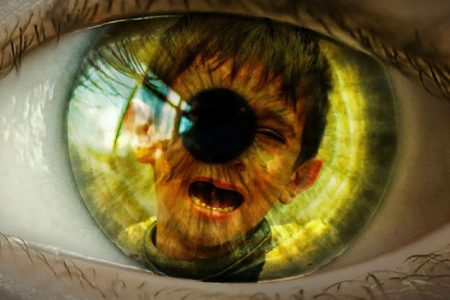Shy parent, shy child?
Not only extreme shyness runs in families, but also an early brain response related to shyness, our family study shows. This finding can inform future research on genetic and environmental factors that play a role in the development of extreme shyness.
Extreme shyness (or social anxiety disorder) is the intense fear and avoidance of social situations. Persons with extreme shyness avoid everyday activities, like school or work, because they are afraid of what others think about them. Previous studies have shown that extreme shyness runs in families: you have a higher risk of being extremely shy if a close family member is afflicted by extreme shyness. We have found that an early brain response to social evaluation also runs in families, and that it is related to extreme shyness.
Extreme shyness as a broad concept
Many factors influence the development of extreme shyness, such as genes, environment, and their interaction. Extreme shyness is a very broad concept, because extremely shy people may display their disorder in different ways. Some people avoid speaking at meetings, some avoid eating in front of others, and some avoid meeting new people. All these different symptoms make it difficult to link extreme shyness to genetic and environmental factors. More specific measures of extreme shyness could help us in future studies on the development of extreme shyness.
Family study
In our family study, we searched for specific brain responses that are related to shyness and run in families. We included individuals with extreme shyness and their partners and children, as well as these individuals’ siblings with their partners and children. Nine of these families came to our lab in Leiden and participated in clinical interview, questionnaires, and EEG and fMRI sessions.
Social evaluation
Before the EEG session, we asked participants to send in a portrait photograph of themselves. We told them that their photo would be evaluated by a panel of peers. This was of course not the case, but we wanted to elicit feelings of being evaluated. During the EEG session, we showed the participants pictures of the ‘evaluating peers’ and asked them to indicate whether they thought the peer would like or dislike them. After this, the participants received feedback, purportedly from the peer: yes (this person likes you), or no (this person does not like you). Again, this social evaluative feedback was not real, but randomly selected by a computer (50% yes, 50% no).
Increased response to negative social evaluation
All family members participated in this EEG task, and we measured their brain responses to social evaluative feedback. We found that a very early EEG component is related to extreme shyness and runs in families. Extremely shy family members showed an increased, early response (within 200 ms) when peers ‘said’ they disliked them, compared to family members without extreme shyness. This early response is probably related to increased attention to this feedback.
And now?
This specific EEG measure could help us in future research into how extreme shyness develops. Because this EEG measure is more specific than the broad concept of extreme shyness, it might be easier to link this measure to genetic and environmental factors. Researchers could investigate whether children at risk for extreme shyness show this EEG measure, and if so, how we could help children with this vulnerability. Of course, a little shyness is not bad, but it should not influence someone’s entire life.




